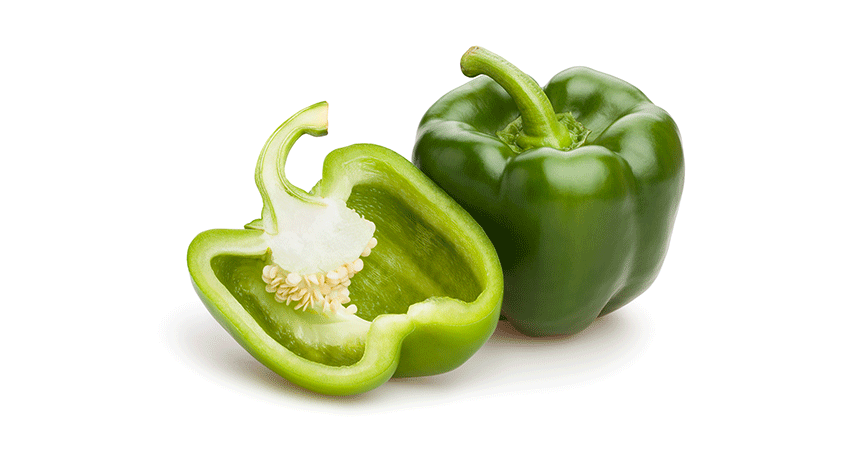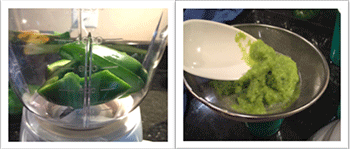Cooking can alter a food’s vitamin C content
Inspired by history class, a teen boils bell peppers for science

Green bell peppers are eaten both raw and cooked. A teen decided to find out if cooking altered the food’s vitamin C content.
bergamont/istockphoto
LOS ANGELES, Calif. — Pirates were scurvy scallywags. But it was the “scurvy” — a condition caused by lack of vitamin C — that inspired 14-year-old Amber Cui. A lesson in history class about how pirates suffered from scurvy led this freshman from Cookeville High School in Tennessee to study the vitamin C content of green peppers as a science project. She found that vitamin C content is highest when peppers are fresh. Boiling brings the concentration down. But the vitamin’s level will rise again if boiling goes on long enough.
Also known as ascorbic acid, vitamin C is one of the many nutrients found in fresh fruits and vegetables. The U.S. National Institutes of Health notes that teen boys should get 75 milligrams (0.002 ounce) and teen girls should get 65 milligrams (also around 0.002 ounce) of vitamin C each day. The vitamin is important for making collagen — a protein found in cartilage and bone.
People who do not get enough of vitamin C may feel tired. Their legs may hurt. Their gums may begin to bleed — even fall out. These are the symptoms of scurvy. In the 1800s, pirates and other sailors often spent long times at sea without access to good sources of vitamin C, such as fresh fruit or vegetables. That’s why many developed scurvy.
Pirates may be the stuff of Disney movies now, but scurvy hasn’t gone away. Even today, Amber notes, “some people can’t get enough vitamin C.” Scurvy can still appear after famines, for example, or even among people who just don’t eat enough fruit and veggies. While looking for more information about scurvy, the teen saw some dietary guidelines that recommended eating vitamin-C-rich fruits and vegetables raw. Amber hates raw green peppers, but doesn’t mind them cooked. So she began to wonder what cooking does to vitamin C levels of veggies.
When fresh, 340 grams (one cup) of green bell peppers have about 129 milligrams (0.005 ounce) of vitamin C. To find out how cooking might change that, Amber chopped up four green peppers and weighed each piece. She kept one pepper’s pieces fresh. She put another pepper in boiling water for 10 minutes, boiled a third for 20 minutes and a fourth for 30 minutes. (After 30 minutes of boiling, she notes, that last pepper “didn’t smell the best.”)
Amber then placed each pepper in a blender and used a strainer to separate the liquid from the solid bits. The teen tested the liquid using a vitamin C test kit that she bought online. By adding the pepper juice drop by drop to her testing kit, she was able to determine the concentration of vitamin C in each pepper.

Raw peppers indeed had the most vitamin C, she found. Ten minutes of boiling reduced the vitamin C level by about 25 percent. But as the peppers boiled for 20 or 30 minutes, she says, the vitamin C level began to rise again. This might be because after boiling for that long, the peppers begin to lose water. That could concentrate the vitamin in the vegetable.
Amber brought the results of her cooking chemistry here to the Intel International Science and Engineering Fair (ISEF). Created by Society for Science & the Public and sponsored by Intel, the yearly fair now draws almost 1,800 high school students from more than 75 countries to show off their research. (The Society also publishes Science News for Students and this blog.)
Most people probably don’t blend their peppers before they eat them. But we do chew and digest them. That’s how the body is able to crack into the hard cell walls of plants to access their vitamins, notes Anitra Carr. She studies the health effects of vitamin C at the University of Otago in Christchurch, New Zealand.
Amber’s pepper results are similar to other scientific findings, Carr says. “The amount of vitamin C in foods generally decreases with cooking,” she notes. The vitamin can leach out into the water in which peppers are cooked. Heat and other chemical processes also can break it down.
But we might still get more vitamin C from some cooked vegetables than raw, Carr says. How? Cooking or blending can soften and break up plant cell walls, she explains. This can make it easier for the body to use the vitamins inside. Some of those vitamins can stay locked within raw vegetables if chewing and digesting doesn’t break up enough cell walls. But it depends on what the vegetable is, how it’s cooked and how much is eaten. “In other words, it is difficult to know exactly how much will be taken up from different foods unless blood vitamin-C levels are tested,” Carr says.
Amber is interested in looking at how different kinds of cooking might change the nutrients inside fruits and vegetables. But so far, her experiments haven’t changed her views on bell peppers. “I can’t eat them raw,” she says. “I like the crunch. I just don’t like the taste.”
Follow Eureka! Lab on Twitter







